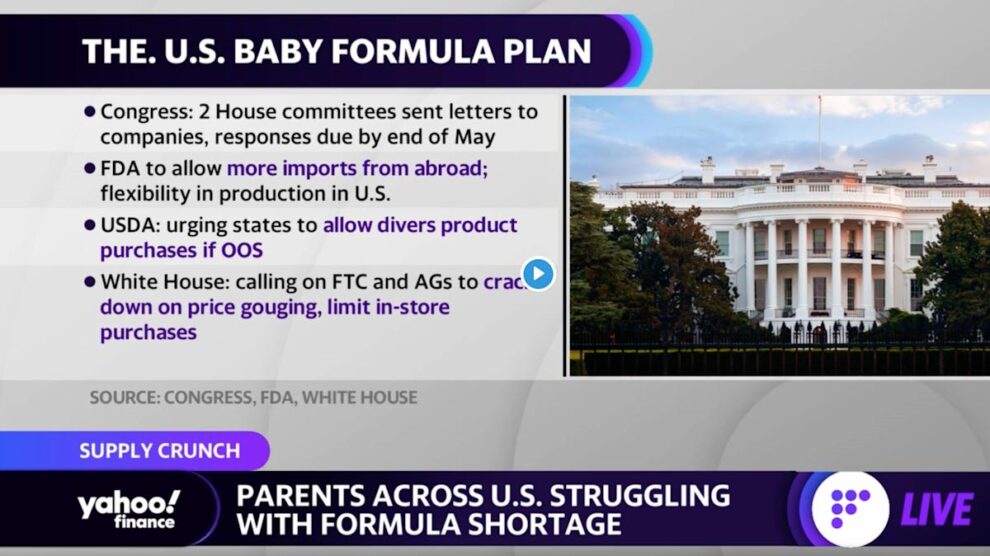Yahoo Finance’s Anjalee Khemlani joins the Live show to discuss the ongoing baby formula shortage that has pushed lawmakers and health officials to investigate and spearhead production efforts to fill shelves.
Video Transcript
DAVE BRIGGS: If pain at the pump wasn’t enough, panic at the grocery store is now upon new parents across the country, because the baby formula shortage is real. The White House and Congress are now addressing the shortage. And Anjalee Khemlani is here with the latest on this story. It is devastating out there for these new parents that have nowhere to turn. What are we learning?
ANJALEE KHEMLANI: That’s right, Dave. Not just those parents, and we have to also point out that this has not just been going on for the last several weeks, but also for the last couple of months. So the US now is with a number of the departments now taking action, including the US Health Department and launching a site for parents to register some of those products that were recalled, which is really what set this off back in February. We got Congress investigating what has happened, whether it is simply supply chain issues or something more. There have been two House committees sending letters to these companies, responses due by the end of May.
Meanwhile, we have the FDA also involved now, Commissioner Dr. Robert Califf saying that next week, he’s looking to allow imports from abroad and provide more flexibility for US companies looking to produce more baby formula, as well as the USDA, which sent a letter to Abbott today, specifically the largest producer of this formula to lift its month to month flexibility provisions for especially those who are on the women, infant, and children family benefits, that’s where 50% of the US formula really comes from. The purchases come from those beneficiaries.
So this is sort of why we have this all of government response. We’ve also got the DOJ involved with attorney generals instructed by the White House to take a look at price gouging and making sure that individuals aren’t just buying from the stores and just selling them online at higher prices, so possibly putting in limits on what people can shop as well.
RACHELLE AKUFFO: And as you mentioned, this is something that started brewing in February. So how did we get here with baby formula? And what’s actually happening with these companies?
ANJALEE KHEMLANI: Yeah, that’s a really good question, Rachelle. So let’s track back to February. So February 17, Abbott, again, the largest producer. That’s in a recall due to contamination issues from its plant in Michigan, and then subsequently shuts down its Michigan plant. And that is really what created this domino effect because now we’ve got other companies like Nestlé Gerber, as well as Mead Johnson and Perrigo, which produces the in-house brands for Amazon and Walmart and others. And they are now under the gun for being able to produce and make up that difference.
One of the things that the White House did was yesterday meet with Walmart, Target, and some of these other companies to help produce more of a certain size and certain type of formula that’s more in demand and more for, especially these wick beneficiaries. So that’s also how we got going. So if you look at the whole market itself, it’s a pretty large market. We’re talking $3.7 billion in 2019, looking to expand more beyond that. 20 specialty formulas used by about 5,000 infants. And there are other uses for these formulas as well for individuals who have other health issues.
And so that’s where part of it comes from. The US right now produces 98% of the baby formula that it utilizes, and the remaining comes from overseas. And that’s where you see the White House taking that effort to look at the expansion through the FDA of where those imports can now come from. Key importers are Mexico, Chile, Ireland, and the Netherlands. So we are likely to see more coming in from there.
EMILY MCCORMICK: All right, Yahoo Finance’s own Anjalee Khemlani, thank you so much.








